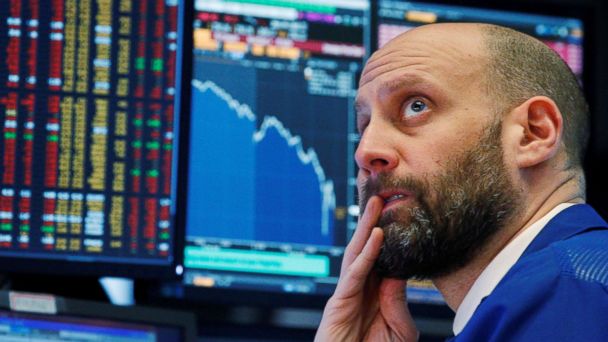Stocks fell this morning amid social unrest in newly locked-down China. The Dow, S&P, and Nasdaq Composite all traded lower as yields were flat through noon. The dollar rallied slightly.
Demonstrations in mainland China over the weekend saw protestors clash with law enforcement in response to Beijing’s “Covid-zero” policy. Residents were sealed into apartment buildings, pushing many people past their breaking points after an apartment fire claimed the lives of 10 people. Social media posts suggested that lockdown protocols prevented first responders from saving lives.
The People’s Daily, China’s state-run newspaper, published articles in an attempt to soothe the unhappy populace. The paper ran headlines suggesting that the government should remove some lockdown restrictions while keeping more “targeted” ones in place.
This did little to assuage the fears of investors, who saw the unrest as a potentially larger problem facing the global economy.
“The negative headlines from abroad are putting pressure on domestic markets,” explained Allianz portfolio manager Charlie Ripley.
“I anticipate we’ll have more volatility and more activity in the markets as we go through the rest of the week, looking at the economic calendar.”
Apple (NASDAQ: AAPL) was hit particularly hard by the news.
“We estimate that Apple now has significant iPhone shortages that could take off roughly at least 5% of units in the quarter and potentially up to 10% depending on the next few weeks in China around Foxconn production and protests,” wrote Wedbush analyst Dan Ives in a note.
AAPL shares were down over 2% through noon.
The market is still up significantly from its mid-October lows, however, after rallying strongly through November. But according to Goldman Sachs analysts, the party may be over soon.
“The performance of U.S. stocks in 2022 was all about a painful valuation de-rating, but the equity story for 2023 will be about the lack of corporate earnings growth,” Goldman’s strategists wrote.
“Put simply, zero earnings growth will drive zero appreciation in the stock market.”
Goldman expects the market to finish flat by the end of 2023. Morgan Stanley analysts took things one step further this morning and suggested that the S&P should close out 2023 around 3,900, or about 2% below its current price level.
And though Wall Street delivered little but bad news this morning for long-term holders, there was a silver lining for short-term traders:
Morgan Stanley believes the S&P will “tread water” next year, but it will also endure major swings in sentiment along the way.
In other words, it’s the exact kind of situation where trend-following traders can outperform.
Billionaire hedge fund manager Paul Tudor Jones covered this topic back in May following a deep market retracement.
“You can’t think of a worse macro environment than where we are right now for financial assets,” Jones said.
“Clearly, you don’t want to own bonds and stocks.”
He continued:
“I think we’re in one of those very difficult periods where simple capital preservation is, I think, the most important thing we can strive for,” and “I don’t know if it’s going to be one of those periods where you’re actually trying to make money.”
Jones was then asked how he would invest moving forward, considering the macro environment at the time.
“If there was a strategy that I would want to employ right now if someone put a gun to my head, I’d say simple trend-following strategies. They are not too popular today. […] They will probably do very well in the next five to ten years.”
He was absolutely right and will be proven correct again in 2023. The first half of the year should see stocks continue their bear market slide, followed by a major rally in H2, likely driven by Fed rate cuts.
By year’s end, that should only frustrate long-term holders, all while short-term traders position themselves to outperform in a big way.








